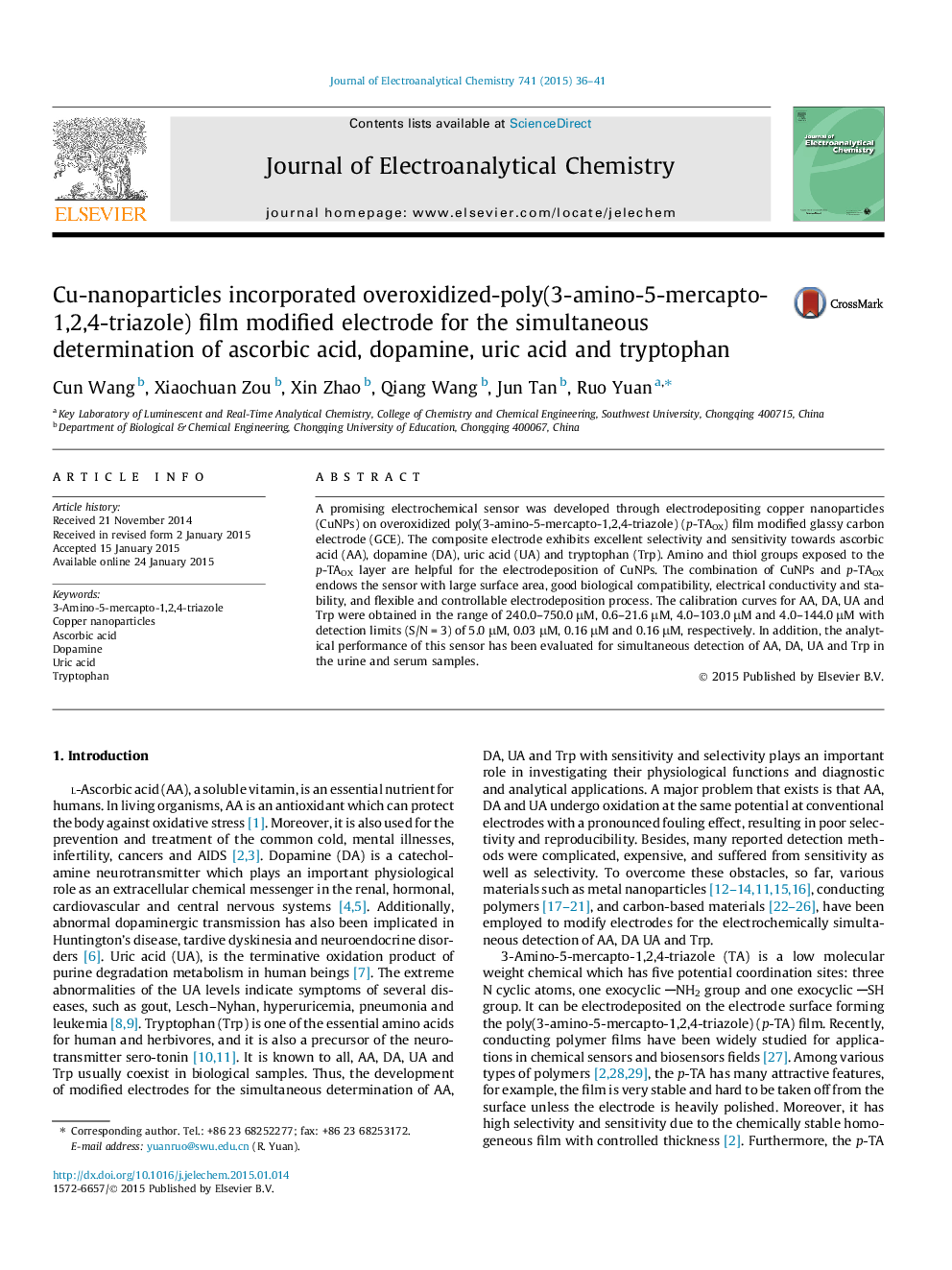| Article ID | Journal | Published Year | Pages | File Type |
|---|---|---|---|---|
| 218488 | Journal of Electroanalytical Chemistry | 2015 | 6 Pages |
•Electropolymerization of poly(3-amino-5-mercapto-1,2,4-triazole) (p-TA) on GCE.•The p-TA film can be overoxidized to form overoxidized p-TAOX.•p-TAOX allows dispersing of Cu and generates additional electrocatalytic sites.•The overlapping voltammetric response of AA, DA, UA and Trp is well-resolved.
A promising electrochemical sensor was developed through electrodepositing copper nanoparticles (CuNPs) on overoxidized poly(3-amino-5-mercapto-1,2,4-triazole) (p-TAOX) film modified glassy carbon electrode (GCE). The composite electrode exhibits excellent selectivity and sensitivity towards ascorbic acid (AA), dopamine (DA), uric acid (UA) and tryptophan (Trp). Amino and thiol groups exposed to the p-TAOX layer are helpful for the electrodeposition of CuNPs. The combination of CuNPs and p-TAOX endows the sensor with large surface area, good biological compatibility, electrical conductivity and stability, and flexible and controllable electrodeposition process. The calibration curves for AA, DA, UA and Trp were obtained in the range of 240.0–750.0 μM, 0.6–21.6 μM, 4.0–103.0 μM and 4.0–144.0 μM with detection limits (S/N = 3) of 5.0 μM, 0.03 μM, 0.16 μM and 0.16 μM, respectively. In addition, the analytical performance of this sensor has been evaluated for simultaneous detection of AA, DA, UA and Trp in the urine and serum samples.
